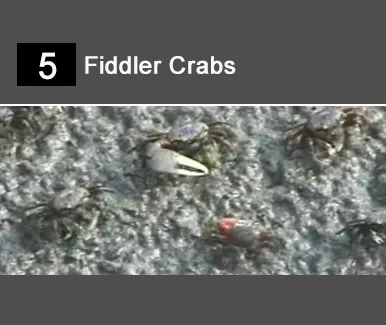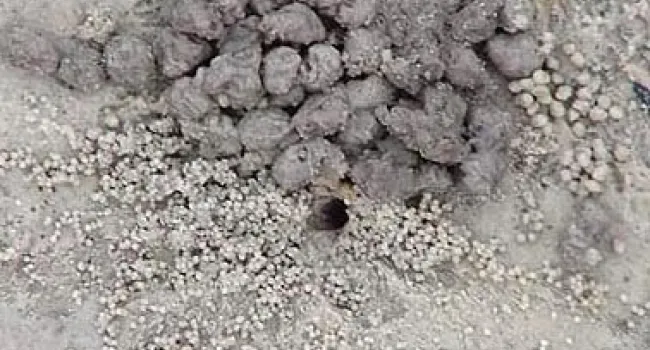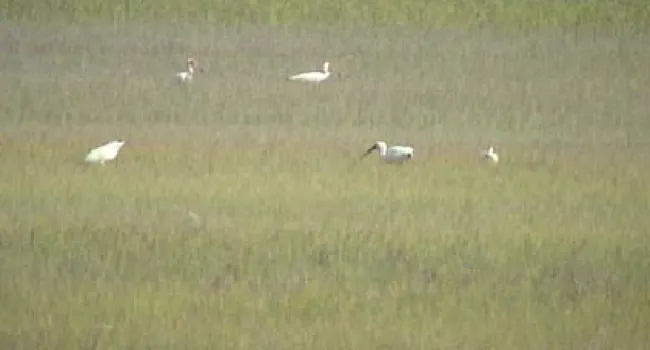
Video
This time-lapse clip shows the fiddler crabs emerging from their burrows as the tide goes out. After the movie has loaded and played, try dragging the "playhead" of the clip back and forth to simulate...
One of the most numerous animals in the salt marsh is the fiddler crab. In the movie above, hundreds of crabs are feeding along a creek bank at low tide after emerging from their burrows. Fiddler crabs eat mud. They use their mouthparts to swish around mud and water, and to separate the organic material (food) from the inorganic material (sand). They swallow the food, and spit the sand back out in a little ball. The male fiddler crabs have one large claw and one small claw for feeding, but the females have two small claws for feeding and no large claw. Fiddler crabs live in burrows in the salt marsh. They are air-breathers and will die if submerged in water. However, they need access to water in order to wet their gills so they can breathe.
When the tide comes in, they retreat into their burrows and plug up the entrance with mud. When the tide ebbs, they emerge from their burrows to feed.
Two different fiddler crabs are common in the salt marsh. The sand fiddler has a purple back and whitish claws, and it makes its burrows in sandy areas of the marsh. The mud fiddler is browner overall, with yellow claws, and is found in muddy areas. White ibis love to eat fiddler crabs.

Video
This time-lapse clip shows the fiddler crabs emerging from their burrows as the tide goes out. After the movie has loaded and played, try dragging the "playhead" of the clip back and forth to simulate...
Video
Male fiddler crabs have one large claw, which can be either their left or right. They wave these large claws at other males to frighten them away from their territory. When they wave the claw, they...
Photo
These tiny balls of sand or mud, perfectly round, are called pseudofeces because they look like fecal pellets. Like true feces, they are bits of indigestible material, but they have never passed...
Photo
White ibis use their long, curved bills to probe into the burrows of the fiddler crabs and pull them out to eat. IBIS. Along with the clapper rail, white ibis are the major bird consumers of the salt...